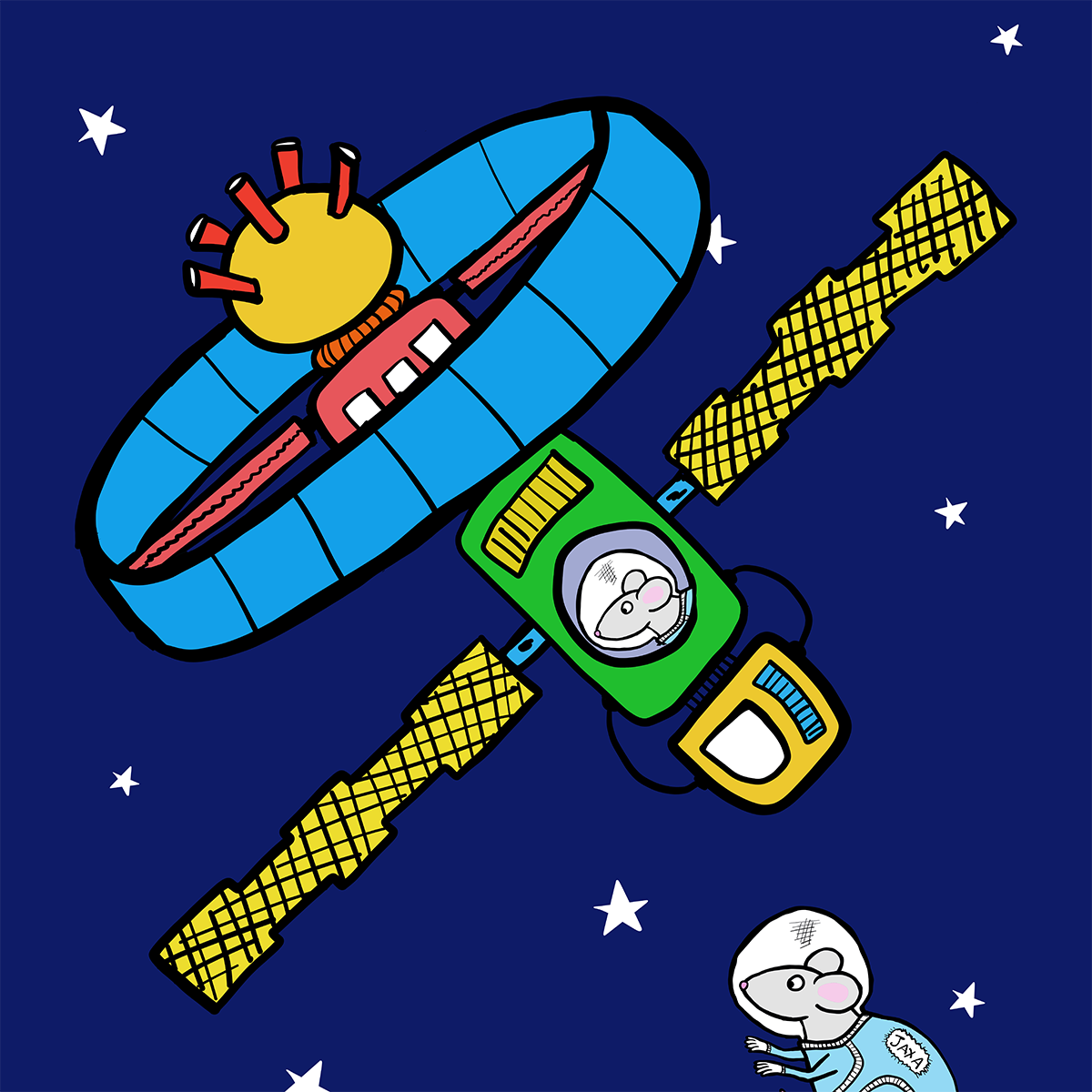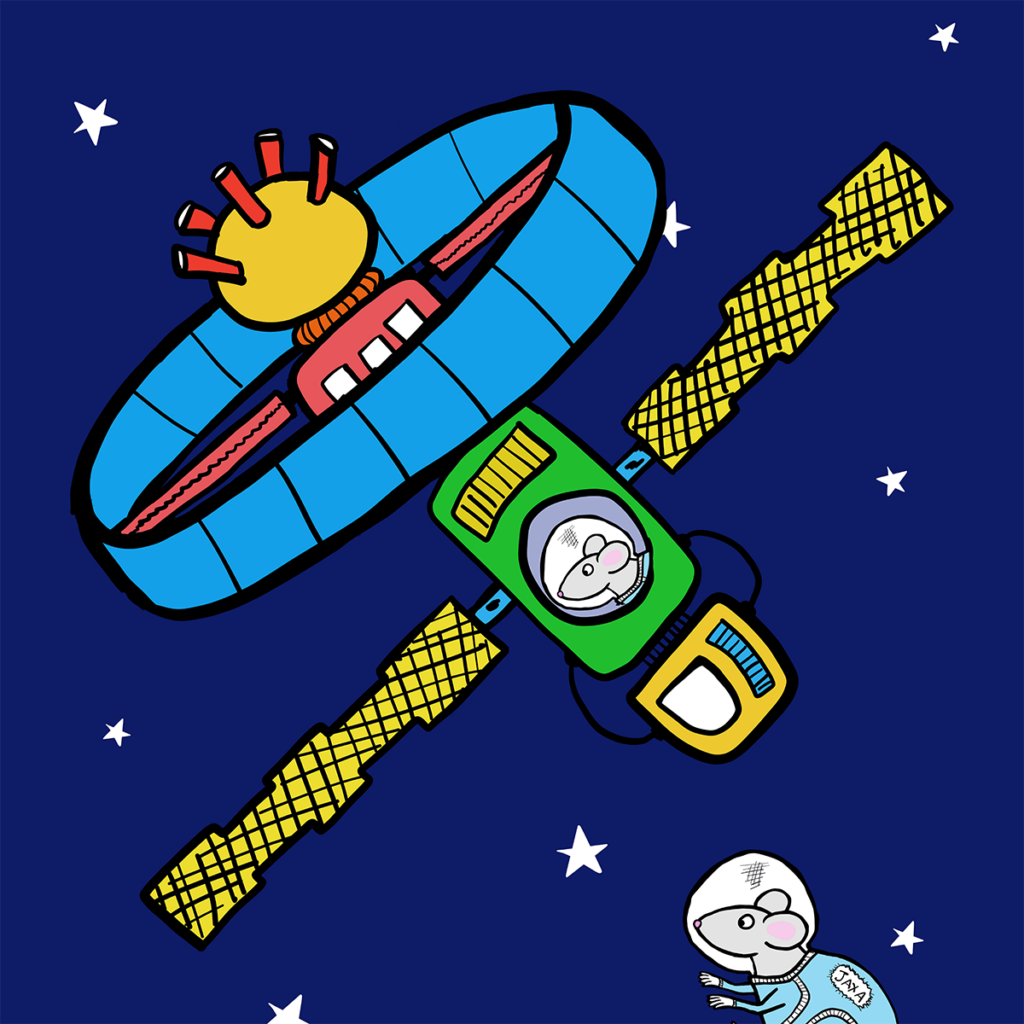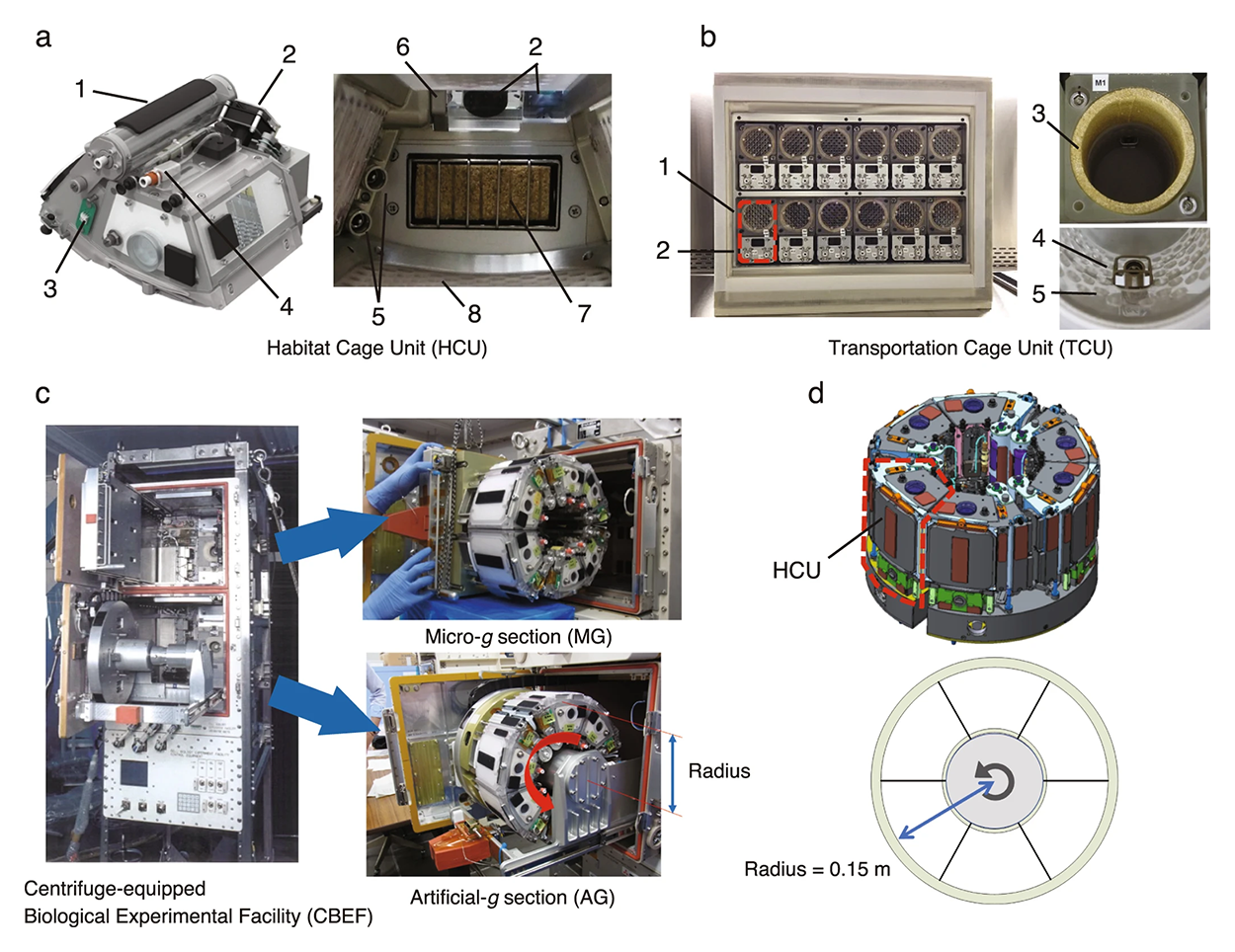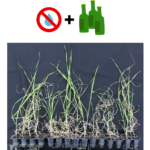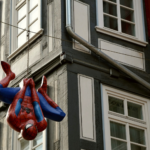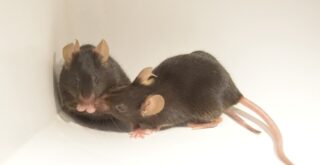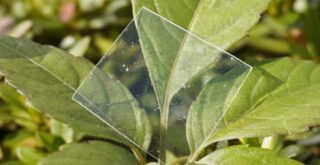A Google search of “animals in space” will show you a lot of chimpanzees, monkeys, dogs, cats, and possibly Muppet pigs (e.g., Dr. Strangepork). You’ll find out that many of the initial tests were simply to see if take-off, space flight, and being in orbit was survivable. What you might not find in your Google search are all the mice and rats that have traveled in space and continue to help us understand how spaceflight and living in space can affect our bodies. A case in point is a recent study by researchers at the RIKEN Center for Integrative Medical Sciences (IMS) in Yokohama, Japan and their colleagues at the Japan Aerospace Exploration Agency (JAXA) and the University of Tsukuba in which the authors examined the benefits of artificial gravity in reducing damage to the immune systems of mice on the International Space Station (ISS).
According to NASA, the average length of a mission to the ISS is six months, with some being much longer (longest mission to date: 437 days by the Russian cosmonaut Valeri Polyakov. For more fun facts, see this NASA article of questions and answers). Unfortunately, space travel and lengthy missions have serious physical side effects, especially on the immune system.

The thymus is a lymphoid organ located in front of the lungs. It is the primary source of T-cells, the immune system’s attack dogs that seek out and destroy foreign invaders. Image: Adobe Stock.
Perhaps the most important cells of the immune system are T-cells, named for the thymus where they are generated. These cells seek out and destroy foreign entities that invade our bodies, like viruses, bacteria, or parasites. Damage to the thymus, whether through accident or age, can weaken the immune system and paradoxically increase the chance of autoimmune diseases in which the immune system attacks and kills healthy cells in the body. And guess what? Space travel seems to damage the thymus. Evidence for this comes from studies in rodents as well as blood analyses of astronauts returning from space that showed lower than normal levels of new T-cells. Scientists have theorized that the cause is related to weightlessness.
The fix is antigravity, or, more accurately, artificial gravity (but antigravity just sounds cooler, right?). In science fiction artificial gravity often takes the form of a centrifuge-type spinning ship or space station. Well, it’s no coincidence that the amount of force produced by centrifuges in the laboratory are measured in units of gravity. For example, a centrifuge with a radius of 8 cm, spinning at 5000 rpm, will generate a force equal to 2,236 times Earth’s gravity. That’s just a bit more than is necessary in space. Recently, JAXA developed a system for centrifuging mouse cages on the ISS. The experimental platform is called the Multiple Artificial-gravity Research System (MARS) and it can be set to produce exactly one gravity (1 g) of force to simulate Earth’s gravity in space.
The study
In collaboration with JAXA, the RIKEN IMS team led by Taishin Akiyama set out to examine how spaceflight effects the thymus and whether artificial gravity can help alleviate any ill effects. The experiment used three groups of mice: those that stayed in Japan, those that stayed on the ISS for 35 days, and those that that stayed on the ISS and experienced 35 days of artificial gravity. The study looked at changes in thymus weight and gene expression.
Here’s what they found
Thymus weight was affected by spaceflight. Thymus weight in mice who lived on the ISS for 35 days without artificial gravity was about half as much as it was in the mice who stayed home. This means that severe thymus [itg-tooltip href=”http://tooltip” tooltip-content=”<p><span style=&aquot;color: #222222; font-family: arial, sans-serif; font-size: small;&aquot;>From the Oxford Dictionary</span></p><br/><p><span style=&aquot;color: #222222; font-family: arial, sans-serif; font-size: small;&aquot;>Atrophy: (1) (of body tissue or an organ) waste away, especially as a result of the degeneration of cells, or become vestigial during evolution.</span></p>”]atrophy[/itg-tooltip] develops in mice after living in space for only one sixth the time of the average ISS human mission.
Artificial gravity reduced thymus atrophy. Thymus weight for the mice who lived in MARS (haha) and experienced artificial gravity was much closer to normal, only dropping 20%. This is very good news, but the fact that it did drop 20% means that weightlessness is not the only aspect of spaceflight that is damaging to the thymus. “Although we can only speculate at present,” says Akiyama, “we think that the additional damage is caused by space radiation.”
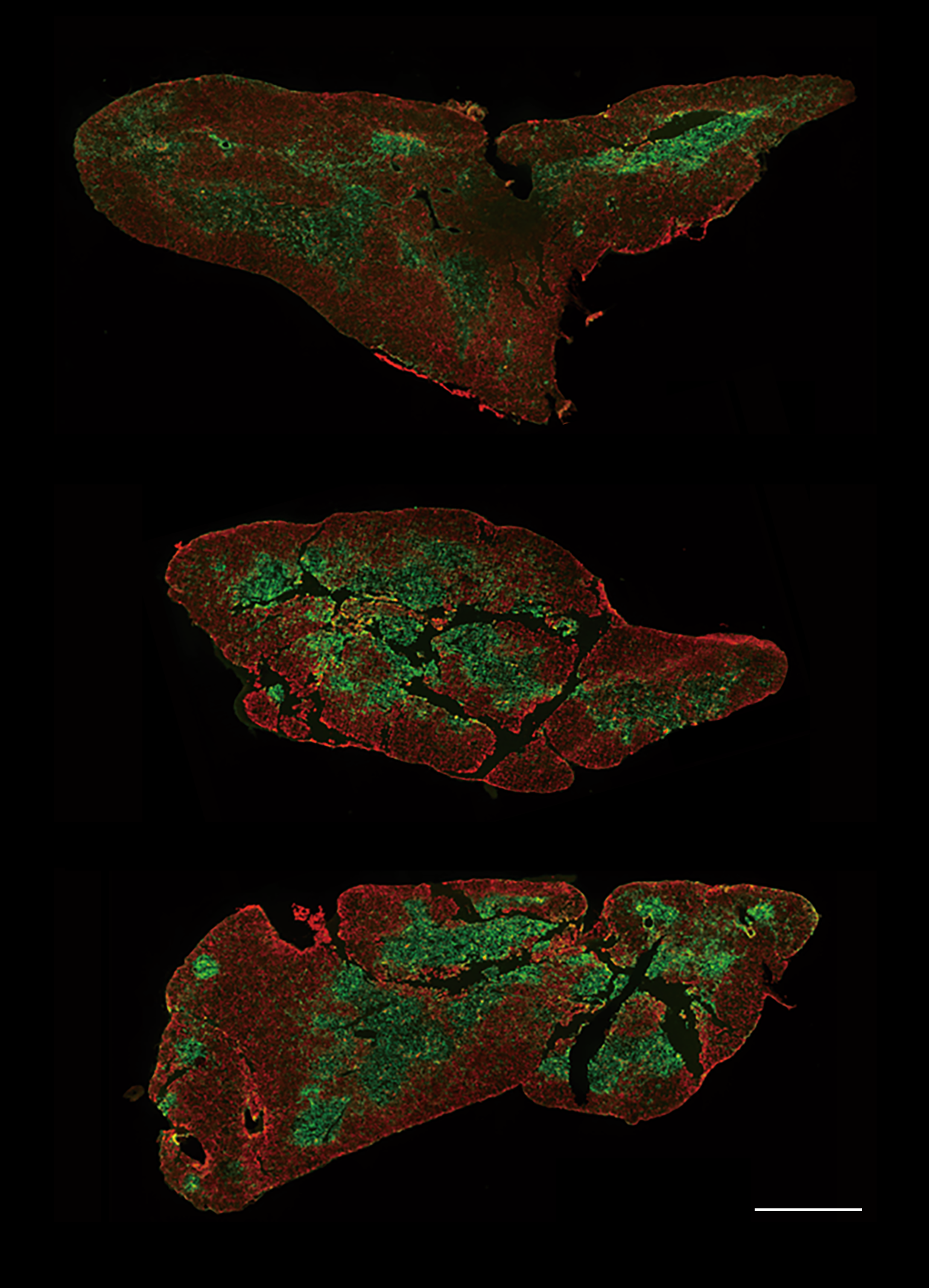
Immunohistochemical staining of mouse thymuses after staying at home (top), being weightless on the ISS (middle), and experiencing artificial gravity on the ISS (bottom). Scale bar is 1 mm. Source: Scientific Reports
The thymus damage is likely related to stress. Levels of glucocorticoids—a type of steroid hormone produced during stress—were twice as high in mice who experienced weightlessness than they were in those who experienced artificial gravity or who did not go to space. Because glucocorticoids are known to cause thymus cells to die, this could be the source of thymus damage. The implication is that artificial gravity reduced the stress felt by the mice, which protected against thymus cell death.
Space life changed gene expression in the thymus, and artificial gravity mitigated the changes to some extent. Gene-expression analysis from two separate missions indicated that histone genes related to cell proliferation (i.e., mitosis) were expressed much less in the thymuses of the mice who were weightless than in those who stayed home. Overall, compared to mice who stayed home, about half as many genes were downregulated in the mice who experienced artificial gravity than in those who did not. Thus, similar to thymus weight, artificial gravity did not completely reverse the changes produced by spaceflight, again indicating that some other factor besides weightlessness is involved.
What it means
The findings indicate that the majority of thymus atrophy during spaceflight could be the result of two processes, one that causes cell death in the thymus and one that prevents new thymocytes from being generated. Whether or not these are independent processes remains to be seen.
Artificial gravity generated by the centrifuged cages was able to reduce stress in the mice (evidence = lower glucocorticoid levels in blood), which likely helped reduce cell death in the thymus (evidence = significantly less thymic weight loss). However, about 20% of thymus atrophy occurred because of some as-yet-unknown process, unrelated to weightlessness (possibly space radiation).
Nevertheless, the benefits of artificial gravity are clear, and the MARS platform was effective in reducing damage to the immune system. This is good news for those who want to see a manned mission to Mars or beyond, which will require people to be in space much longer than 6 months or even 1 to 2 years.
Will we ever see centrifuging spaceships and space stations? Akiyama thinks it’s possible, but not in the near future. “Researchers are currently trying to develop centrifuge devices for people to use during space flight, which will alleviate the negative effects of microgravity. We are likely still far away from being able to centrifuge a whole spaceship, a small centrifuge device should be feasible.”
Final thoughts (absurdities)
When reading and writing about mice in space, it’s hard not to think of ……. Piiiiiigs in Spaaaaaaace! Here’s a classic episode.
According to NASA, the average length of a mission to the ISS is six months, with some being much longer (longest mission to date: 437 days by the Russian cosmonaut Valeri Polyakov. For more fun facts, see this NASA article of questions and answers). Unfortunately, space travel and lengthy missions have serious physical side effects, especially on the immune system.
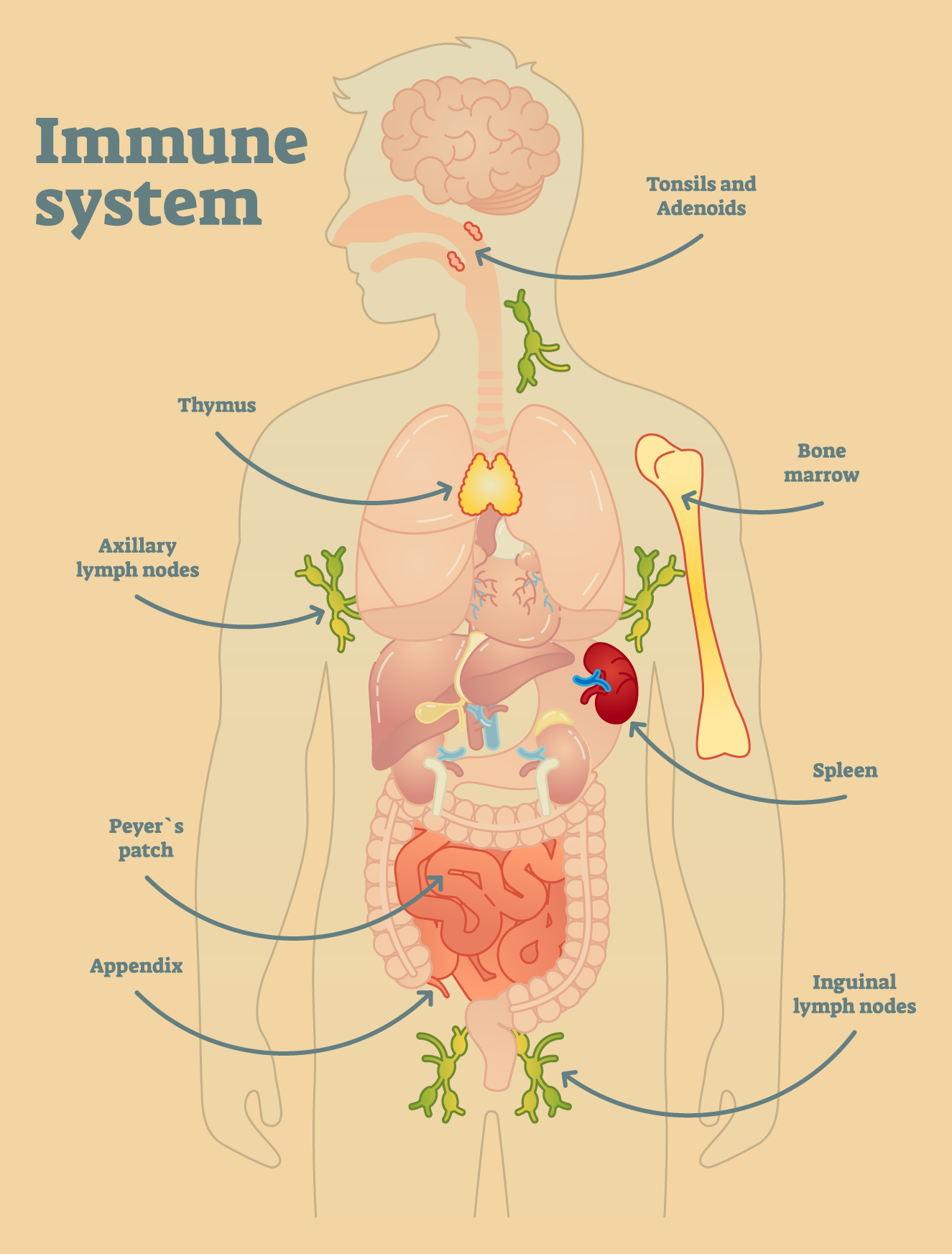
The thymus is a lymphoid organ located in front of the lungs. It is the primary source of T-cells, the immune system’s attack dogs that seek out and destroy foreign invaders. Image: Adobe Stock.
Perhaps the most important cells of the immune system are T-cells, named for the thymus where they are generated. These cells seek out and destroy foreign entities that invade our bodies, like viruses, bacteria, or parasites. Damage to the thymus, whether through accident or age, can weaken the immune system and paradoxically increase the chance of autoimmune diseases in which the immune system attacks and kills healthy cells in the body. And guess what? Space travel seems to damage the thymus. Evidence for this comes from studies in rodents as well as blood analyses of astronauts returning from space that showed lower than normal levels of new T-cells. Scientists have theorized that the cause is related to weightlessness.
The fix is antigravity, or, more accurately, artificial gravity (but antigravity just sounds cooler, right?). In science fiction artificial gravity often takes the form of a centrifuge-type spinning ship or space station. Well, it’s no coincidence that the amount of force produced by centrifuges in the laboratory are measured in units of gravity. For example, a centrifuge with a radius of 8 cm, spinning at 5000 rpm, will generate a force equal to 2,236 times Earth’s gravity. That’s just a bit more than is necessary in space. Recently, JAXA developed a system for centrifuging mouse cages on the ISS. The experimental platform is called the Multiple Artificial-gravity Research System (MARS) and it can be set to produce exactly one gravity (1 g) of force to simulate Earth’s gravity in space.
The study
In collaboration with JAXA, the RIKEN IMS team led by Taishin Akiyama set out to examine how spaceflight effects the thymus and whether artificial gravity can help alleviate any ill effects. The experiment used three groups of mice: those that stayed in Japan, those that stayed on the ISS for 35 days, and those that that stayed on the ISS and experienced 35 days of artificial gravity. The study looked at changes in thymus weight and gene expression.
Here’s what they found
Thymus weight was affected by spaceflight. Thymus weight in mice who lived on the ISS for 35 days without artificial gravity was about half as much as it was in the mice who stayed home. This means that severe thymus [itg-tooltip href=”http://tooltip” tooltip-content=”<p><span style=&aquot;color: #222222; font-family: arial, sans-serif; font-size: small;&aquot;>From the Oxford Dictionary</span></p><br/><p><span style=&aquot;color: #222222; font-family: arial, sans-serif; font-size: small;&aquot;>Atrophy: (1) (of body tissue or an organ) waste away, especially as a result of the degeneration of cells, or become vestigial during evolution.</span></p>”]atrophy[/itg-tooltip] develops in mice after living in space for only one sixth the time of the average ISS human mission.
Artificial gravity reduced thymus atrophy. Thymus weight for the mice who lived in MARS (haha) and experienced artificial gravity was much closer to normal, only dropping 20%. This is very good news, but the fact that it did drop 20% means that weightlessness is not the only aspect of spaceflight that is damaging to the thymus. “Although we can only speculate at present,” says Akiyama, “we think that the additional damage is caused by space radiation.”
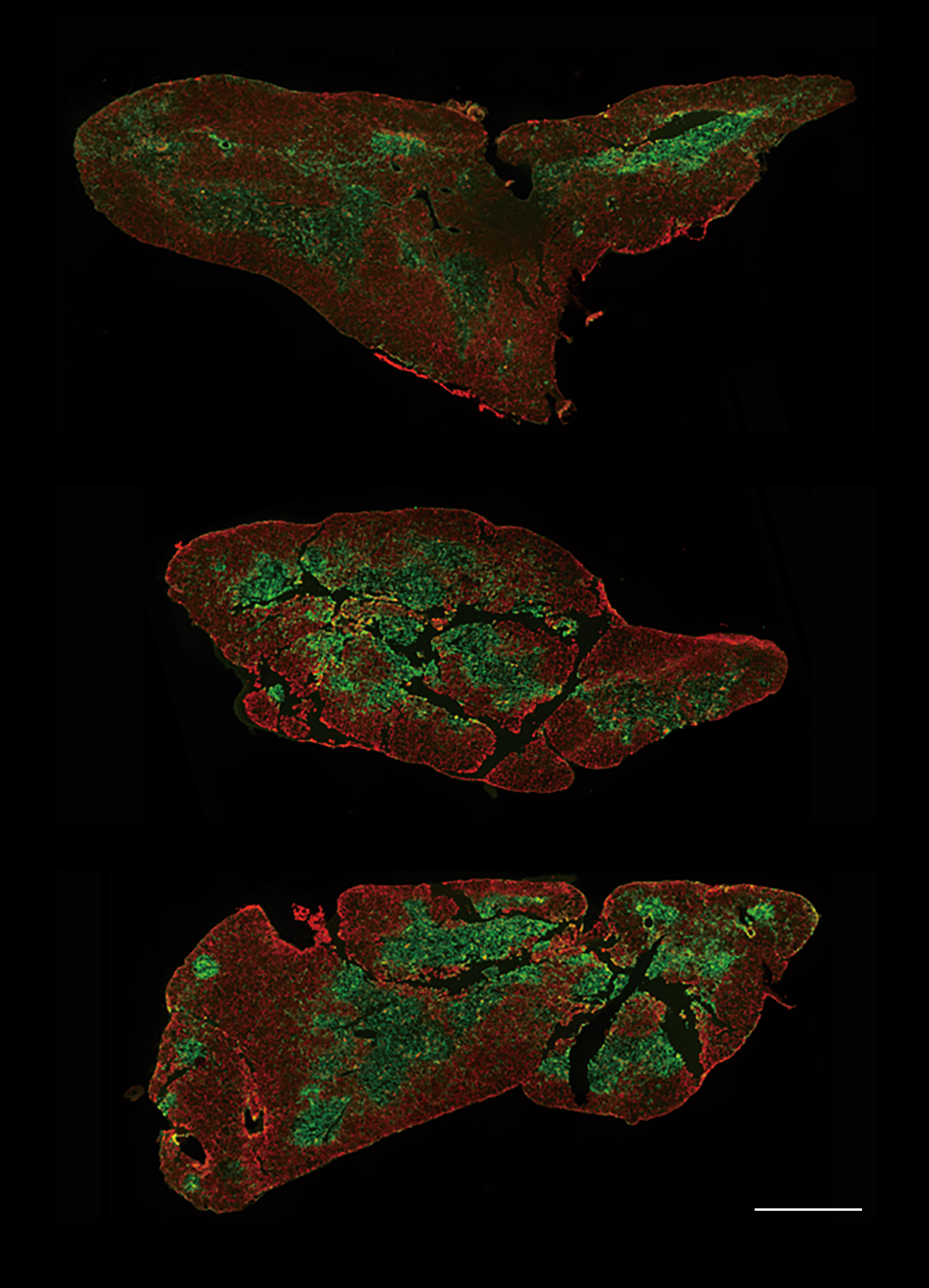
Immunohistochemical staining of mouse thymuses after staying at home (top), being weightless on the ISS (middle), and experiencing artificial gravity on the ISS (bottom). Scale bar is 1 mm. Source: Scientific Reports
The thymus damage is likely related to stress. Levels of glucocorticoids—a type of steroid hormone produced during stress—were twice as high in mice who experienced weightlessness than they were in those who experienced artificial gravity or who did not go to space. Because glucocorticoids are known to cause thymus cells to die, this could be the source of thymus damage. The implication is that artificial gravity reduced the stress felt by the mice, which protected against thymus cell death.
Space life changed gene expression in the thymus, and artificial gravity mitigated the changes to some extent. Gene-expression analysis from two separate missions indicated that histone genes related to cell proliferation (i.e., mitosis) were expressed much less in the thymuses of the mice who were weightless than in those who stayed home. Overall, compared to mice who stayed home, about half as many genes were downregulated in the mice who experienced artificial gravity than in those who did not. Thus, similar to thymus weight, artificial gravity did not completely reverse the changes produced by spaceflight, again indicating that some other factor besides weightlessness is involved.
What it means
The findings indicate that the majority of thymus atrophy during spaceflight could be the result of two processes, one that causes cell death in the thymus and one that prevents new thymocytes from being generated. Whether or not these are independent processes remains to be seen.
Artificial gravity generated by the centrifuged cages was able to reduce stress in the mice (evidence = lower glucocorticoid levels in blood), which likely helped reduce cell death in the thymus (evidence = significantly less thymic weight loss). However, about 20% of thymus atrophy occurred because of some as-yet-unknown process, unrelated to weightlessness (possibly space radiation).
Nevertheless, the benefits of artificial gravity are clear, and the MARS platform was effective in reducing damage to the immune system. This is good news for those who want to see a manned mission to Mars or beyond, which will require people to be in space much longer than 6 months or even 1 to 2 years.
Will we ever see centrifuging spaceships and space stations? Akiyama thinks it’s possible, but not in the near future. “Researchers are currently trying to develop centrifuge devices for people to use during space flight, which will alleviate the negative effects of microgravity. We are likely still far away from being able to centrifuge a whole spaceship, a small centrifuge device should be feasible.”
Final thoughts (absurdities)
When reading and writing about mice in space, it’s hard not to think of ……. Piiiiiigs in Spaaaaaaace! Here’s a classic episode.
Further reading
Horie et al. (2019) Impact of spaceflight on the murine thymus and mitigation by exposure to artificial gravity during spaceflight. Sci Rep. doi: 10.1038/s41598-019-56432-9.
Further reading
Horie et al. (2019) Impact of spaceflight on the murine thymus and mitigation by exposure to artificial gravity during spaceflight. Sci Rep. doi: 10.1038/s41598-019-56432-9.

